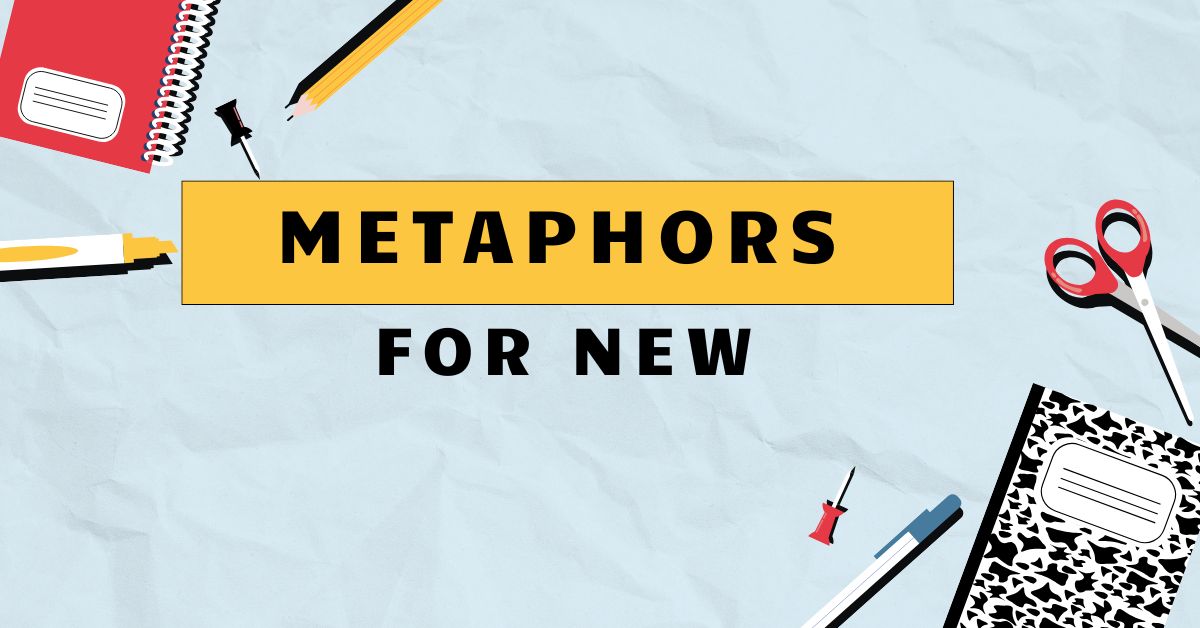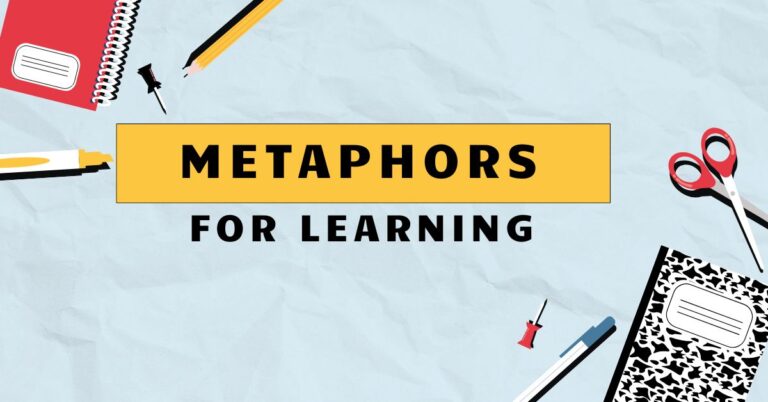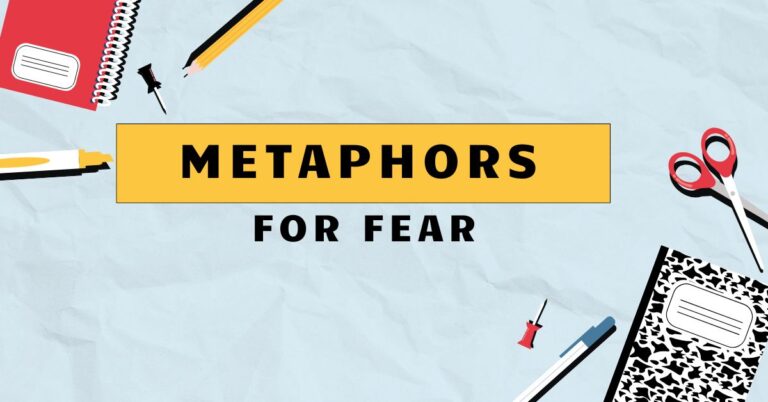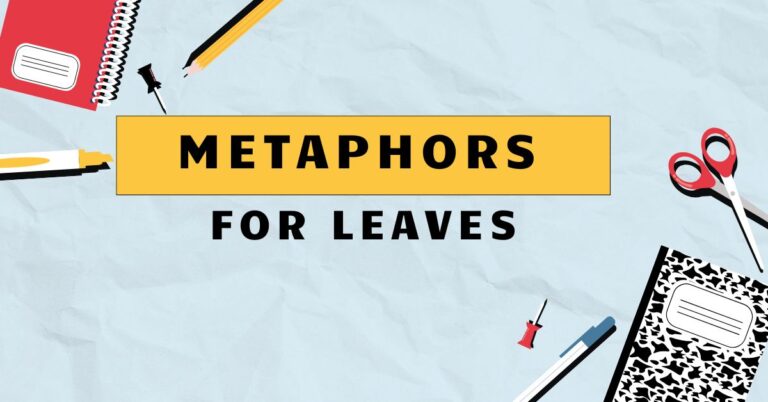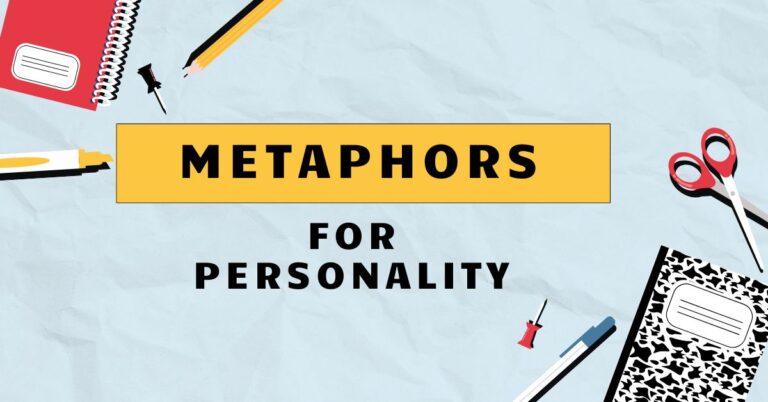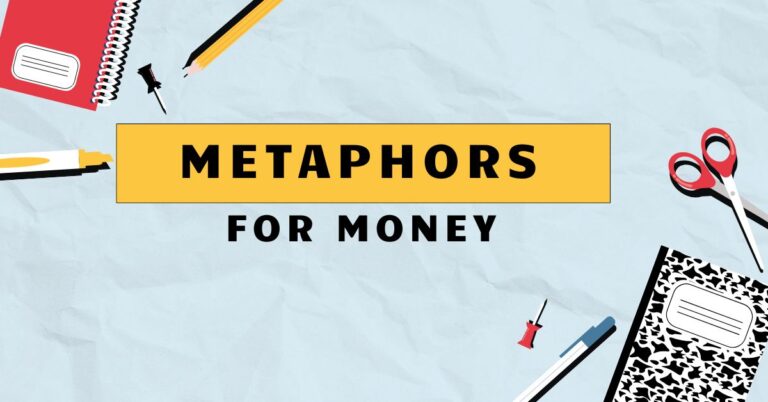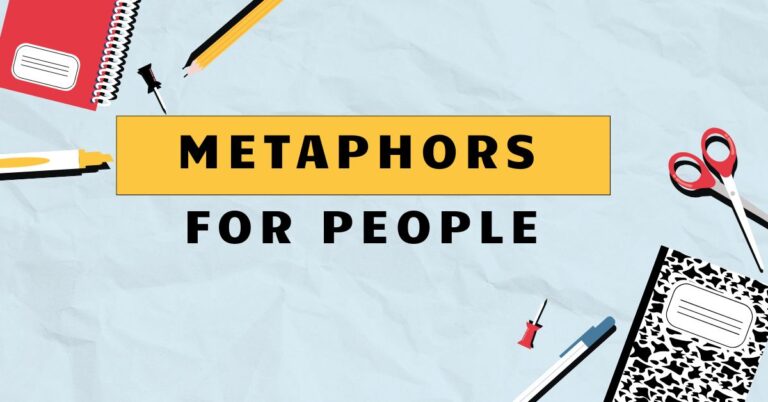41 Metaphors for New : Understanding Fresh Perspectives in Language
Metaphors breathe life into language, allowing us to express abstract concepts in vivid and relatable ways. When describing something as “new,” we often go beyond the literal, employing metaphors to convey the sense of freshness, innovation, or unfamiliarity.
Understanding these metaphors not only enriches our vocabulary but also enhances our ability to comprehend and appreciate the nuances of English. This article explores the diverse range of metaphors used to describe “newness,” providing a comprehensive guide for learners of all levels.
By delving into the various types of metaphors associated with “new,” we will uncover the underlying meanings and emotional connotations they evoke. This exploration will equip you with the tools to effectively use and interpret these metaphors in both writing and speech.
Whether you’re an English language learner, a student of literature, or simply someone who appreciates the beauty of language, this article will provide valuable insights into the art of metaphorical expression.
Table of Contents
- Definition of Metaphors for “New”
- Structural Breakdown of Metaphors
- Types and Categories of Metaphors for “New”
- Examples of Metaphors for “New”
- Usage Rules for Metaphors
- Common Mistakes When Using Metaphors
- Practice Exercises
- Advanced Topics in Metaphorical Language
- Frequently Asked Questions
- Conclusion
Definition of Metaphors for “New”
A metaphor is a figure of speech that directly compares two unrelated things, asserting that one thing *is* another to highlight a shared quality. It is a powerful tool for creating vivid imagery and conveying complex ideas in a concise and memorable way.
Metaphors for “new” are those that use this comparison to describe something that is recent, innovative, or unfamiliar, drawing parallels between the concept of “newness” and other concrete or abstract ideas.
The function of these metaphors is multifaceted. Primarily, they serve to emphasize the positive aspects of “newness,” such as freshness, potential, and progress.
They can also highlight the challenges associated with the unfamiliar, such as uncertainty or risk. Furthermore, metaphors for “new” are often used to evoke emotional responses, creating a sense of excitement, anticipation, or even apprehension, depending on the context and the specific metaphor employed.
These metaphors add depth and color to language, making it more engaging and impactful.
These metaphors can be found in various contexts, including literature, journalism, advertising, and everyday conversation. They are particularly prevalent in fields that value innovation and creativity, such as technology, business, and the arts.
The skillful use of metaphors for “new” can elevate communication, making it more persuasive and memorable. Understanding these metaphors allows for a deeper appreciation of the text and the author’s intent.
Structural Breakdown of Metaphors
Metaphors, at their core, involve two key elements: thetenorand thevehicle. The tenor is the subject being described (in this case, “new”), while the vehicle is the object or concept used to represent the tenor.
The effectiveness of a metaphor hinges on the relationship between these two elements and the shared characteristics they possess.
The structure of a metaphor often follows a simple pattern: “A is B,” where A is the tenor and B is the vehicle. However, metaphors can also be expressed more subtly, without explicitly stating the comparison.
For example, instead of saying “This technology is a game-changer,” one might say “This technology has changed the game,” implying the same metaphorical relationship.
Understanding the underlying structure of a metaphor allows for a more critical analysis of its meaning and impact. By identifying the tenor and the vehicle, we can better understand the intended comparison and the specific qualities being emphasized.
This deeper understanding enhances our ability to interpret and appreciate the nuances of metaphorical language.
Types and Categories of Metaphors for “New”
Metaphors for “new” can be categorized based on the specific concepts they draw upon. Here are some common types:
Metaphors of Birth and Creation
These metaphors compare “newness” to the act of birth or creation, emphasizing the potential for growth and development. They often evoke a sense of excitement and anticipation, highlighting the promise of what is to come.
Examples include “a seed of an idea,” “the dawn of a new era,” and “a fresh start.”
Metaphors of Freshness and Purity
These metaphors associate “newness” with qualities like cleanliness, purity, and unspoiled nature. They emphasize the invigorating and revitalizing aspects of something new.
Examples include “a breath of fresh air,” “a clean slate,” and “untouched territory.”
Metaphors of Discovery and Exploration
These metaphors link “newness” to the act of finding something previously unknown or venturing into uncharted territory. They highlight the excitement of exploration and the potential for unexpected rewards.
Examples include “uncharted waters,” “a breakthrough discovery,” and “a path less traveled.”
Metaphors of Technology and Innovation
These metaphors use technological advancements to represent “newness,” emphasizing progress, efficiency, and cutting-edge design. They often convey a sense of modernity and sophistication.
Examples include “state-of-the-art,” “next-generation,” and “a quantum leap.”
Metaphors of Seasons and Cycles
These metaphors connect “newness” to the cyclical nature of time, highlighting the recurring patterns of renewal and change. They often evoke a sense of hope and optimism, suggesting that even after periods of decline, new beginnings are always possible.
Examples include “a new spring,” “a turning of the page,” and “a fresh chapter.”
Examples of Metaphors for “New”
The following tables provide a variety of examples of metaphors for “new,” categorized by type. Each table includes numerous examples to illustrate the diverse ways in which “newness” can be expressed metaphorically.
Examples of Metaphors of Birth and Creation
This table showcases how the concept of “new” is metaphorically linked to birth and creation, highlighting potential and beginnings.
| Metaphor | Explanation |
|---|---|
| A seed of an idea | A new concept is compared to a seed, suggesting potential for growth. |
| The dawn of a new era | A new period is likened to the sunrise, symbolizing a fresh start. |
| A fresh start | A new beginning is compared to a clean slate, free from past mistakes. |
| The genesis of a project | The beginning of a project is compared to the creation of the world. |
| The birth of a technology | A new technology is likened to a newborn, full of potential. |
| A budding romance | A new relationship is compared to a flower bud, just beginning to bloom. |
| The embryo of a plan | A plan in its early stages is compared to an embryo, needing nurturing. |
| A nascent industry | A new industry is compared to a newborn, still developing. |
| The inception of a movement | The start of a movement is compared to its initial conception. |
| A groundbreaking innovation | A new innovation is compared to breaking ground, paving the way for progress. |
| The fountainhead of creativity | The source of new ideas is compared to a fountain, endlessly flowing. |
| The wellspring of inspiration | The origin of inspiration is compared to a spring, providing constant renewal. |
| The cradle of civilization | The place where civilization began is compared to a cradle, nurturing its growth. |
| The birthing pains of change | The difficulties of implementing new changes are compared to the pains of childbirth. |
| A newly hatched plan | A plan that has just been created is likened to a chick that has just hatched. |
| The genesis of a new trend | The beginning of a new trend is compared to the creation of something new. |
| A sprouting idea | An idea that is just beginning to develop is likened to a plant sprouting. |
| The conception of a new strategy | The initial thought of a new strategy is compared to the moment of conception. |
| A newly minted law | A law that has just been passed is compared to a newly made coin. |
| The emerging market | A new market that is just starting to develop is compared to something that is emerging. |
| The infancy of the internet | The early stages of the internet are compared to the infancy of a human. |
| A new leaf | Turning over a new leaf symbolizes a fresh start and a commitment to change. |
Examples of Metaphors of Freshness and Purity
This table illustrates metaphors that associate “new” with freshness and purity, emphasizing revitalization and unspoiled qualities.
| Metaphor | Explanation |
|---|---|
| A breath of fresh air | Something new is compared to clean, invigorating air. |
| A clean slate | A new beginning is compared to a blank surface, free from past mistakes. |
| Untouched territory | A new area is compared to land that has not been explored before. |
| Virgin snow | New snow is compared to something pure and untouched. |
| A pristine environment | A new environment is compared to something clean and unspoiled. |
| A spotless record | A new record is compared to something without any blemishes. |
| A blank canvas | A new opportunity is compared to a blank canvas, ready to be filled. |
| A crystal-clear stream | A new idea is compared to pure, clear water. |
| Unblemished reputation | A new reputation is compared to something without any flaws. |
| A pure heart | A new intention is compared to a heart free from malice. |
| A clean bill of health | A new beginning is compared to a clean bill of health, indicating a fresh start. |
| A fresh perspective | A new viewpoint is compared to something clean and unbiased. |
| A sparkling clean start | A new beginning is compared to something that is brilliantly clean. |
| Unadulterated enthusiasm | New enthusiasm is compared to something pure and genuine. |
| A newly scrubbed deck | A new start is compared to a deck that has been freshly cleaned. |
| A polished performance | A new performance is compared to something refined and flawless. |
| A gleaming opportunity | A new opportunity is compared to something bright and attractive. |
| A sanitized environment | A new approach is compared to an environment free from contamination. |
| A newly whitewashed wall | A new façade is compared to a wall that has been freshly painted. |
| A purified intention | A new intention is compared to something that has been cleansed. |
| A rejuvenating experience | A new experience is compared to something that revitalizes. |
| An unsullied reputation | A new reputation is compared to something that hasn’t been tarnished. |
Examples of Metaphors of Discovery and Exploration
This table showcases metaphors that relate “new” to discovery and exploration, highlighting excitement and potential rewards.
| Metaphor | Explanation |
|---|---|
| Uncharted waters | A new situation is compared to unexplored seas. |
| A breakthrough discovery | A new finding is compared to overcoming a significant obstacle. |
| A path less traveled | A new approach is compared to a route that few have taken. |
| A hidden gem | A new discovery is compared to a precious stone that’s been concealed. |
| A gold mine of information | A new source of information is compared to a rich source of valuable material. |
| A frontier of knowledge | A new area of study is compared to an unexplored boundary. |
| A voyage of discovery | A new undertaking is compared to a journey to uncover new things. |
| A treasure trove of ideas | A new collection of ideas is compared to a chest full of valuable items. |
| A map to success | A new plan is compared to a guide leading to a desired outcome. |
| A compass for the future | A new direction is compared to an instrument guiding towards the future. |
| A portal to new possibilities | A new opportunity is compared to a gateway to new chances. |
| Unveiling a new truth | Discovering something new is compared to revealing a hidden truth. |
| Charting a new course | Starting a new direction is compared to creating a new map. |
| Exploring uncharted territory | Venturing into the unknown is compared to exploring a new land. |
| Unearthing new insights | Discovering new perspectives is compared to digging up valuable information. |
| Pioneering a new approach | Developing a new method is compared to being a trailblazer. |
| Blazing a new trail | Creating a new path is compared to marking a route through the wilderness. |
| Navigating new challenges | Facing new obstacles is compared to steering through difficult waters. |
| Mapping out a new strategy | Planning a new approach is compared to creating a detailed plan. |
| Uncovering hidden potential | Discovering new capabilities is compared to finding a valuable resource. |
Examples of Metaphors of Technology and Innovation
This table provides examples of how technological advancements are used metaphorically to represent “new,” emphasizing progress and modernity.
| Metaphor | Explanation |
|---|---|
| State-of-the-art | Something new is compared to the most advanced technology. |
| Next-generation | Something new is compared to the latest version of a technology. |
| A quantum leap | A new advancement is compared to a significant jump forward. |
| Cutting-edge technology | Something new is compared to the forefront of technological development. |
| A technological marvel | A new invention is compared to something amazing and groundbreaking. |
| A digital revolution | A new change is compared to a transformative shift in technology. |
| A software upgrade | A new improvement is compared to updating a computer program. |
| A hardware breakthrough | A new invention is compared to a significant advance in physical technology. |
| A cybernetic enhancement | A new ability is compared to being improved by technology. |
| A high-tech solution | A new answer is compared to a sophisticated technological approach. |
| A futuristic design | A new concept is compared to something from the future. |
| A streamlined process | A new procedure is compared to an efficient technological system. |
| A digital transformation | A new change is compared to converting to a digital format. |
| A tech-savvy approach | A new method is compared to being skilled in technology. |
| An automated solution | A new answer is compared to a self-operating system. |
| A virtual reality experience | A new experience is compared to an immersive digital world. |
| A smart device | A new tool is compared to an intelligent gadget. |
| A wireless connection | A new link is compared to a cable-free connection. |
| A networked system | A new arrangement is compared to a connected group of devices. |
| An integrated platform | A new system is compared to a unified technological structure. |
Examples of Metaphors of Seasons and Cycles
This table presents metaphors that connect “new” to the cyclical nature of seasons and time, highlighting renewal and change.
| Metaphor | Explanation |
|---|---|
| A new spring | A new beginning is compared to the season of rebirth. |
| A turning of the page | A new chapter is compared to moving forward in a book. |
| A fresh chapter | A new phase is compared to a new section in a story. |
| The dawn of a new day | A new opportunity is compared to the start of a day. |
| A seasonal shift | A new change is compared to the changing of seasons. |
| A cyclical pattern | A new trend is compared to a recurring sequence. |
| A recurring theme | A new idea is compared to a repeating motif. |
| The wheel of fortune | A new chance is compared to the turning of a wheel. |
| The ebb and flow of change | A new process is compared to the tides of the ocean. |
| A renewal of hope | A new feeling is compared to the restoration of optimism. |
| A cyclical resurgence | A new revival is compared to a recurring comeback. |
| The changing tides of fortune | A new situation is compared to the shifting fortunes of the sea. |
| A season of growth | A new period is compared to a time of development. |
| A time of transition | A new phase is compared to a period of change. |
| A period of regeneration | A new era is compared to a time of renewal. |
| The cycle of life | A new beginning is compared to the continuous loop of existence. |
| The rhythm of change | A new process is compared to the pattern of development. |
| The tempo of progress | A new advancement is compared to the speed of development. |
| The cadence of innovation | A new idea is compared to the rhythm of creativity. |
| A recurring opportunity | A new chance is compared to something that happens again and again. |
Usage Rules for Metaphors
While metaphors can greatly enhance communication, it’s crucial to use them effectively and appropriately. Here are some key rules to keep in mind:
- Clarity: The metaphor should be easily understood by the audience. Avoid obscure or overly complex comparisons. Ensure that the connection between the tenor and the vehicle is clear and logical.
- Relevance: The metaphor should be relevant to the context and the overall message. It should enhance the understanding of the subject, not distract from it.
- Originality: While common metaphors can be effective, striving for originality can make your writing or speech more engaging and memorable. Avoid clichés and overused expressions.
- Consistency: Maintain consistency within a metaphor. Avoid mixing metaphors or creating contradictory comparisons.
- Appropriateness: Consider the audience and the situation when choosing a metaphor. What might be effective in one context could be inappropriate in another.
- Avoid Overuse: While metaphors are powerful, overuse can diminish their impact. Use them sparingly and strategically to maximize their effect.
By following these rules, you can ensure that your metaphors are both effective and appropriate, enhancing your communication and making it more engaging for your audience.
Common Mistakes When Using Metaphors
Even experienced writers and speakers can make mistakes when using metaphors. Here are some common errors to avoid:
- Mixed Metaphors: Combining two or more incompatible metaphors, creating a confusing or nonsensical image.
- Incorrect: “Let’s nip it in the bud before it snowballs out of control.” (Mixing the metaphors of stopping something small and something growing uncontrollably.)
- Correct: “Let’s nip it in the bud before it becomes a problem.” OR “Let’s address it before it snowballs out of control.”
- Clichés: Using overused and predictable metaphors that have lost their impact.
- Incorrect: “It was a breath of fresh air.” (Overused and lacks originality.)
- Correct: “His innovative approach was like a gust of wind clearing out stale ideas.” (More original and vivid.)
- Overly Complex Metaphors: Creating metaphors that are too difficult for the audience to understand.
- Incorrect: “The algorithm’s heuristic matrix was a palimpsest of cognitive dissonance.” (Too technical and unclear.)
- Correct: “The algorithm’s decision-making process was a complex combination of conflicting information.” (Simpler and more accessible.)
- Inappropriate Metaphors: Using metaphors that are offensive, insensitive, or out of place in the given context.
By being aware of these common mistakes, you can avoid them in your own writing and speaking, ensuring that your metaphors are clear, effective, and appropriate.
Practice Exercises
Test your understanding of metaphors for “new” with the following exercises. Identify the type of metaphor used in each sentence or fill in the blank with an appropriate metaphor.
Exercise 1: Identify the Metaphor Type
| Question | Answer |
|---|---|
| 1. The company is experiencing a new spring after years of decline. | Metaphor of Seasons and Cycles |
| 2. This technology is a quantum leap in medical science. | Metaphor of Technology and Innovation |
| 3. Her mind was a blank canvas, ready to be filled with new ideas. | Metaphor of Freshness and Purity |
| 4. The project was the genesis of a new era in space exploration. | Metaphor of Birth and Creation |
| 5. We are venturing into uncharted waters with this new business venture. | Metaphor of Discovery and Exploration |
| 6. The project started as a seed of an idea. | Metaphor of Birth and Creation |
| 7. This new approach is a breath of fresh air in the stale world of politics. | Metaphor of Freshness and Purity |
| 8. The discovery of the new element was a breakthrough. | Metaphor of Discovery and Exploration |
| 9. The software upgrade provides a state-of-the-art user experience. | Metaphor of Technology and Innovation |
| 10. The changes mark a turning of the page in the company’s history. | Metaphor of Seasons and Cycles |
Exercise 2: Fill in the Blank
| Question | Answer |
|---|---|
| 1. This new initiative is like ___________, promising growth and development. | a new spring |
| 2. The invention of the internet was a true ___________. | quantum leap |
| 3. Starting a new business can feel like entering ___________. | uncharted waters |
| 4. After the scandal, the politician had to start with ___________. | a clean slate |
| 5. The discovery of penicillin was ___________ in medicine. | a breakthrough |
| 6. This new art movement is _________ of creativity in modern times. | a fountainhead |
| 7. The company’s restructuring marks __________ in its operational strategy. | a turning of the page |
| 8. Their innovative product is truly _________ in the market. | state-of-the-art |
| 9. This research opens _______ for future studies in genetics. | a portal to new possibilities |
| 10. The new policy is designed to provide _______ for the economy. | a breath of fresh air |
Advanced Topics in Metaphorical Language
For advanced learners, exploring the nuances of extended metaphors and the cognitive processes behind metaphor comprehension can provide deeper insights into the art of metaphorical expression.
Extended Metaphors: An extended metaphor is a metaphor that is sustained over several lines or paragraphs, developing the comparison in more detail. This technique can create a richer and more complex image, but it requires careful planning and execution to avoid becoming convoluted or confusing.
Cognitive Linguistics and Metaphor:Cognitive linguistics views metaphor as a fundamental aspect of human thought, not just a literary device. According to this perspective, metaphors shape our understanding of abstract concepts by mapping them onto more concrete experiences.
For example, the metaphor “time is money” influences how we perceive and value time.
Metaphor and Culture:Metaphors are often culturally specific, reflecting the values, beliefs, and experiences of a particular society. Understanding the cultural context of a metaphor is essential for accurate interpretation and effective communication.
For example, a metaphor based on agricultural practices might be more readily understood in a rural community than in an urban setting.
Frequently Asked Questions
- What is the difference between a metaphor and a simile?
A metaphor directly equates two things (e.g., “He is a lion”), while a simile uses “like” or “as” to make a comparison (e.g., “He is like a lion”). Metaphors are more assertive and create a stronger connection between the two things being compared.
- How can I improve my ability to understand metaphors?
Read widely, pay attention to the language used by skilled writers and speakers, and practice identifying the tenor and vehicle in different metaphors. Also, consider the context and the intended meaning.
- Is it okay to use common metaphors or should I always strive for originality?
Common metaphors can be effective in certain situations, especially when clarity is paramount. However, striving for originality can make your writing or speech more engaging and memorable. Aim for a balance between clarity and originality.
- How can I avoid using mixed metaphors?
Be mindful of the images you are creating and ensure that they are consistent and compatible. If you are unsure, try visualizing the metaphor or asking someone else to review your writing.
- Are metaphors only used in literature?
No, metaphors are used in a wide range of contexts, including everyday conversation, journalism, advertising, and business communication. They are a fundamental part of human language and thought.
- What role does context play in understanding metaphors?
Context is crucial for understanding metaphors, as it provides clues about the intended meaning and the relationship between the tenor and the vehicle. The same metaphor can have different interpretations in different contexts.
- Can a metaphor be interpreted in multiple ways?
Yes, metaphors can sometimes be open to interpretation, especially if they are complex or ambiguous. However, a good metaphor should have a clear and intended meaning that is readily accessible to the audience.
- What makes a metaphor effective?
An effective metaphor is clear, relevant, original (to some extent), and appropriate for the audience and context. It should enhance understanding and create a vivid image in the reader’s mind.
- How do cultural differences affect the understanding of metaphors?
Metaphors are often rooted in cultural experiences and values. Different cultures may interpret the same metaphor differently, or some metaphors may not translate well across cultures due to a lack of shared cultural context.
- Are there any situations where metaphors should be avoided?
Yes, in situations where clarity and precision are paramount, such as technical writing or legal documents, metaphors should be used sparingly or avoided altogether. In these contexts, literal language is preferred to minimize the risk of misinterpretation.
Conclusion
Mastering metaphors for “new” is essential for enriching your English vocabulary and improving your communication skills. By understanding the different types of metaphors, their structural elements, and the rules governing their usage, you can effectively use metaphors to express nuanced ideas and evoke emotional responses.
Remember to avoid common mistakes such as mixed metaphors and clichés, and always consider the context and audience when choosing a metaphor.
Continue to practice identifying and using metaphors in your reading, writing, and speaking. The more you engage with metaphorical language, the more natural and intuitive it will become.
Embrace the power of metaphors to add depth, color, and creativity to your communication, and you will unlock a new level of expressiveness in your English language skills. The journey of language learning is a continuous exploration, and metaphors are a valuable tool in that journey.

